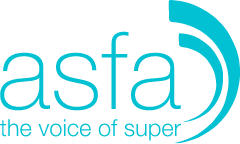While superannuation is a long-term proposition for Australians, there are also opportunities to improve your superannuation balance in the run-up to the end of the financial year. In many cases there is a need to act soon if you want to have a contribution or other transaction processed in time.
Like private health insurance benefit caps for dental and optical expenses, it can be an annual ‘use it or lose it’ exercise. Contribution and other superannuation caps generally reset each financial year.
For people not yet retired or approaching retirement
For this financial year and also next financial year the concessional contributions cap is $27,500. The concessional cap applies to contributions that come from your before tax income and which are generally taxed at the rate of 15% when they are received by a superannuation fund rather than at your personal marginal income tax rate. A higher tax rate applies when your contributions and taxable income exceed $250,000 a year. Your employer Superannuation Guarantee contributions are concessional contributions, as are salary sacrifice contributions and contributions for which you claim a personal tax deduction in your tax return.
Carry forward rules allow you to make extra concessional contributions—above the general concessional contributions cap—without having to pay extra tax. This involves accessing unused concessional cap amounts from previous years. However, this is only available when your total super balance at the end of 30 June of the previous financial year is less than $500,000. Other conditions also apply.
It can also be worthwhile for some individuals to make non-concessional contributions. You do not get a tax deduction for these but there is generally a lower rate of tax applying to investment earnings within superannuation. The general cap for these contributions is generally $100,000 but in some cases you can bring forward your cap from future years to increase the amount you can contribute. Various conditions and limits apply so as with concessional contributions talk to your fund first or seek professional tax or financial advice before making such contributions.
if you’re a low or middle-income earner and make personal (after-tax) contributions to your super fund, the Government may also make a contribution (called a co-contribution) up to a maximum amount of $500. The amount of government co-contribution you receive depends on your income and how much you contribute. You don’t need to apply for the super co-contribution. When you lodge your tax return, the ATO will work out if you’re eligible and make any required payment to your fund.
For people approaching retirement
Starting up an account-based income stream with your superannuation balance can make good sense when you retire. Investment earnings supporting an income stream are tax free, and income streams are generally free from tax when you are aged 60 and over.
There is though a lifetime limit on the total amount of super that can be transferred into tax-free retirement phase income streams, including most pensions and annuities. On 1 July 2023, the general transfer balance cap will index by $200,000 to $1.9 million. So if your are thinking about starting up an income stream and your super balance is over $1.7 million, you might want to think about waiting until after 30 June.
Also, for those retiring soon but with lower super balances getting as much money into tax advantaged super as possible before retirement could be a good move. Many individuals can make full use of both concessional and non-concessional caps, including the measures described above which allow carry forward of past unused caps or bringing forward the use of future caps. Age limits and work tests can apply, so talk to your fund or financial adviser before making any contributions.







